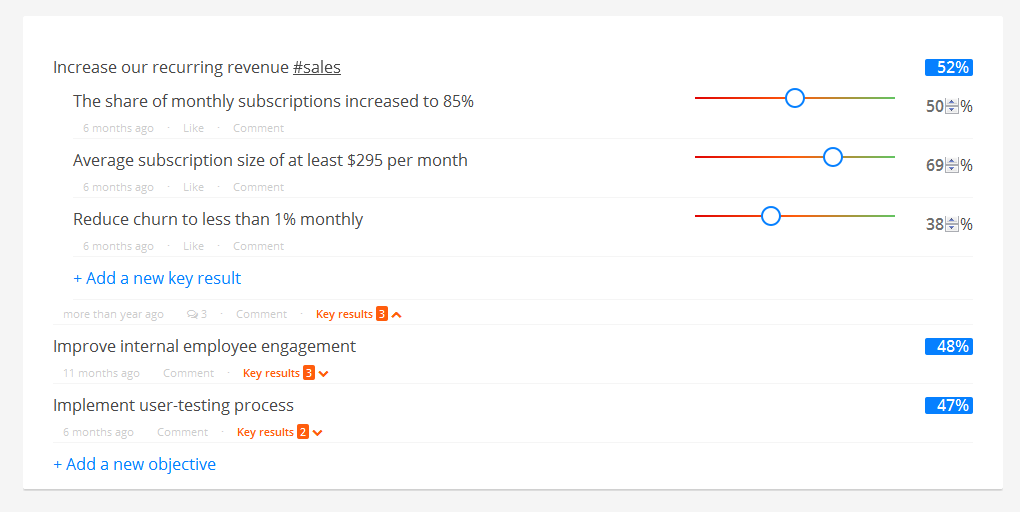A couple of weeks ago, when time for annual cleaning finally arrived, I inspected my drawers and shelves for things to throw out. I moved one dusty document pile to the side, and down fell a spiral-bound notebook with an ambitious title My Journal.
Expecting the worst, I skimmed through this surprisingly thin notebook. There wasn’t much in terms of embarrassing details until I stopped on the very last note that simply said “I promise to write in this journal at least once a week”.
This note was taken two years ago.
I’m sure my story is not unique. Seems like we collectively settled with an idea that it is okay to break your promises and miss your goals if you don’t feel like it.
University of Scranton research suggests that just 8% of people achieve their New Year’s goals. That doesn’t sound as horrifying when you take into account how many of these resolutions are “I will read more” or “I will (probably) eat less tacos”.
But what if there’s more at stake? What if there’s a make-or-break situation for your company? How do effectively set goals and stick to them?
Short answer: OKRs.
Long answer: Objectives and Key Results.
Read a case study on how other companies get results using OKRs.
Yes, OKRs, a planning and goal-setting technique adopted by the likes of Google and Oracle, is what separates men from boys. Basically, when you implement OKRs, you write down 3-5 objectives and key results that would demonstrate achieving said objectives.
So OKRs is another name for a to-do list?
Not exactly.
With OKR system, you ask yourself why you chose these goals and how you are going to achieve them. Will I get closer to my objective by doing so and so? OKRs promote disciplined and focused thinking.
Secondly, OKRs establish clear guidelines for measuring your progress. In short, you know when you made an effort. And speaking of efforts, OKR system makes them more centralized and collaborative.
By setting OKRs, everybody in your team, company or conglomerate knows exactly what your top priorities are and how to achieve them best. It makes for a far smoother and more satisfying working experience.
Interested? Look up our infographic and Weekdone Academy to learn more.
How to Do It Right
Feeling ready to dive in OKRs? Already flexing your managerial muscles?
Don’t be hasty. Even plans need some planning beforehand. There are prerequisites for using OKRs, and it’s pointless to implement them without understanding the basics. Here’s what John Doerr, the man who presented OKRs to Google’s leadership back in 1999, has to say about the most important rule:
„The company must have conviction around goal setting. This commitment needs to come from all levels: the CEO, the senior leadership team, and every team member within the company. That’s the best way to ensure success.“
There is little we might add to that.
Well, except these next 6 simple tips on setting on your objectives and key results. If you want to gain benefit from your OKRs, you have to make sure they are:
1. Inspirational
OKRs embody ambition. Just as engine needs the spark to start, so do we need inspiration. Instead of waiting for it, make it yourself. Choose the goals that motivate you. The rule of thumb states that you have to look forward to completing them.
Be specific with your goals and embrace the metrics. Companies like Oracle don’t wake up one morning saying “we have to become the best”. They set smaller goals, like “Reduce G&A to 5% of revenues”, which contribute to their vision.
Don’t shoot for the stars or you’ll miss.
2. Achievable
There is a nice paradox at play here. Thing is, goals should be achievable but not 100% achievable. Confused?
Good.
Ideally, you should be hitting about 70-80% of your goals. If you work in Google and accomplish all of your goals 100%, you might receive a side eye instead of congratulations. Getting everything done means you took pity on yourself and played it safe.
There should be a right mix of realistic and aggressive goals for you to rise to the challenge but not feel too overwhelmed. Leave room for stretch goals in case you do extremely well with the initial objectives.
Also, try to narrow it down to just 3-5 objectives, with 3 key results for each. Your focus is too valuable a resource to waste it on hundreds of goals you won’t achieve.
3. Time-bound
An objective has to have a deadline. If you want to boost your revenue but don’t set a due date, you might as well kick back until the better times. There’s no stopping you from slacking off because there will always be an excuse to do this later.
Ideally, each objective you write down should end with “by XXXX”. So, instead of saying “We will launch an X feature” try “We will launch an X feature by July 2015”.
Again, no point in wearing rose-tinted glasses. If you know there’s no way to make it in time, go for a more lenient term.
4. Measurable
Marissa Mayer famously said, “It’s not a key result unless it has a number”. Who we are to argue with one of the most powerful business women in the world?
OKRs is all about following your progress. To better gauge it, you need to have quantifiable key results. With numbers and quantified data, you can accurately measure how far you’ve come towards reaching your goals and how far you have to go.
Let’s say you set a goal for your starting publishing business to sell 1,000 books until May. If you already sold 600 of them, it means you’re already more than halfway there. By setting very specific and quantifiable goals you make it easier for yourself to find willpower and motivation.
5. Public
We respect privacy as much as the next guy, but this next thought should be underscored: Even personal OKRs should not be entirely personal.
In Google, they make them public knowledge, and OKRs appear on employee’s biographical information. You could even look up Larry Page and Sergey Brin’s OKRs, that’s how much they value transparency.
This way, everybody understands the specifics of what others are working on and rely on concrete knowledge instead of assumptions. Not only does this level of visibility help achieve better teamwork, it utilizes human psychology to strive for better results.
When your goals are open for everyone to see, you simply can’t throw in the towel.
6. Gradeable
Think of grading in terms of education. Try to understand where you went wrong with your goals. Did you set them too low or too high? Did you overshot it? Find what scope and scale works for you best.
Don’t punish yourself for low grades, just try to learn from your mistakes. Think how you can refine your next OKRs.
Get started
If you want a thorough introduction to OKRs in Weekdone, you can look up our earlier article. Below, we will only inspect a sample screen with objectives and key results and overview some basic features.
This is how OKR page should look like (your mileage may vary):
The button labeled + Add a new objective allows to write another one. (Remember what we told you about the maximum amount of objectives, though!)
There is a similar button, + Add a new key result, under each objective. Their number is shown below, right beside the due date and comment button. Notice a slider to the right of every result. You can move it to show your progress.
The total progress, shown in the upper right corner, is an average of all key results.
If it sounds easy, guess what – it really is.
Don’t believe us? Sign up for a free trial and see for yourself.
As they say, you’re only as good as the company you keep. With OKRs, you will be walking among the ranks of Google, Oracle, LinkedIn, Intel and Zynga.
That’s a good enough catch for us.


